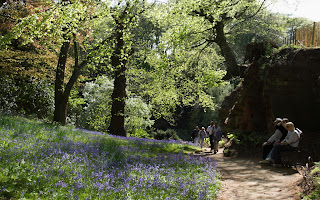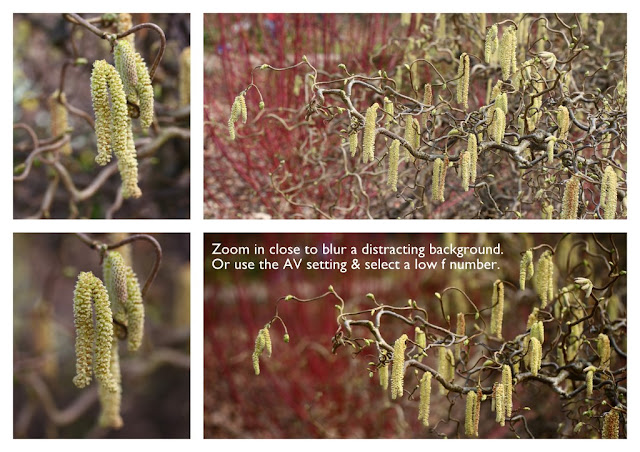Easter was ages ago wasn’t it? It feels like it especially with wedding fever having dominated in the intervening period. But it was only less than a week ago on Easter Sunday that we went to Quarry Bank Mill http://www.nationaltrust.org.uk/main/w-quarrybankmillandstyalestate for a picnic with my great nephew – that’s not my “fantastic” nephew (although he is), but my “great nephew”, as in I’m a Great Aunt (feeling old)! You’re always guaranteed a good day out with the National Trust – this isn’t a sponsored plug, just my honest view as a mum and garden lover. If you're a member it feels like a free day out too – there were six of us and we spent a grand total of £8.60 between us on ice creams, and as the photographs will evidence, we had a really great time.
 After a picnic on the grass by the car park we headed down to the meadow where staff from a certain chocolate company were organising events for the kids. It was busy but not crazily so and our guys had a go at just about everything. I was majorly impressed with the face painting especially Sam’s slightly angry chicks and Abbie’s rainbow, which was done in one stroke with some great gadget. First photo lesson coming up – like any proud parent I wanted to photograph the face paints before they got smudged and the first picture I took of Abbie didn’t work because the sun was just way too bright – just look at the harsh shadows and contrasts on her face. There are two ways to get round this; one is to turn your flash on – the camera will fire what’s called a “fill in” flash, just enough to get rid of the shadows. It works but looks a bit false. The best solution is to get the person to move into a nice shady area and take the shot without flash – this looks much more natural. But of course your model might not always want to do as you ask! Luckily Abbie obliged after being blackmailed with ice cream (after the photo!).
After a picnic on the grass by the car park we headed down to the meadow where staff from a certain chocolate company were organising events for the kids. It was busy but not crazily so and our guys had a go at just about everything. I was majorly impressed with the face painting especially Sam’s slightly angry chicks and Abbie’s rainbow, which was done in one stroke with some great gadget. First photo lesson coming up – like any proud parent I wanted to photograph the face paints before they got smudged and the first picture I took of Abbie didn’t work because the sun was just way too bright – just look at the harsh shadows and contrasts on her face. There are two ways to get round this; one is to turn your flash on – the camera will fire what’s called a “fill in” flash, just enough to get rid of the shadows. It works but looks a bit false. The best solution is to get the person to move into a nice shady area and take the shot without flash – this looks much more natural. But of course your model might not always want to do as you ask! Luckily Abbie obliged after being blackmailed with ice cream (after the photo!).Have I mentioned that it was a belter of a summer’s day (at the end of April!) and we couldn’t have been seeing the gardens at Quarry Bank Mill on a more beautiful day. But bright sunshine does create lots of challenges when you’re trying to take photographs of pretty much anything and you really have to think about what you’re doing if you want to get some nice shots. The camera can struggle to capture what you see with your eye and contrasts between shadows and sunlight will be much starker than with the naked eye. Case in point - just through the entrance of the garden is a path alongside a glade carpeted with bluebells and in the distance bright splashes of colour from the rhododendrons. This looked lovely but was impossible to photograph because the foreground was dark, a shaded glade, and the background was very brightly lit by the mid-day sun. Later or earlier in the day with the sun at a lower angle this might have been possible. Sometimes you just have to look for a different shot.
The garden at Quarry Bank is spread along a number of terraces up quite a steep bank (hence its name!) and at the lowest level by the river there is a path lined with the aforementioned rhododendrons (I’ve just recently found out that azaleas are a type of rhodendron so I can now stop fretting about which is which and just lump them all together!). With the sun filtered through trees and bushes to the left I was able to take a nicely lit shot of the pretty pathway. I cropped out as much of the sky as possible as it was so bright that it was white and wouldn’t have added to the shot. I also did some close ups of the rhododendron flowers as they were breathtaking, but I made sure to pick flowers in the shade or in soft, dappled light.
The deep purple tulips on the lower terraces were the real stars for me and I spent ages taking a variety of different shots, some wider angles and lots of close ups with the light shining through the petals. You can see in the collage the dramatic changes in colour caused by the light. The tulips in the shade were a blackish purple whereas those lit by the sun were a sparkling deep ruby. All were set off so perfectly by the green stalks and leaves and flashes of blue from the bluebells in between.
 As you climb steeply up the terraces (or take the gentler zigzagging path) you are quickly rewarded with views across the garden to the mill in the background. I’ve photographed from this viewpoint in the autumn when the leaves have turned gold and red and it’s a lovely vista then too.
As you climb steeply up the terraces (or take the gentler zigzagging path) you are quickly rewarded with views across the garden to the mill in the background. I’ve photographed from this viewpoint in the autumn when the leaves have turned gold and red and it’s a lovely vista then too.At the top of the garden there’s another area of bluebells and this time I could use the light to my advantage and get a sense of a shady glade that was a resting place for some people after the steep climb. Others chose to stop awhile under the magnificent handkerchief tree in the grassy meadow just beyond.
I stopped off one last time at the tulips before I left the garden - I felt as if I wasn't done with them yet. I did some more close ups, this time with my 60mm macro lens. I also collared Abbie into posing in front of them for me and this demonstrates nicely why a macro lens is often also called a portrait lens.
We didn't go into the mill this time - I've been twice on school trips as an accompanying mum - this trip is always popular as we have to go off to the restaurant for cake whilst the kids experience Victorian schooling at the Apprentice House! On a less gloriously sunny day the mill is well worth a visit - there's often some craft making activity and something to interest everyone.
So, another garden visited at this amazing time of year, when nature wakes up after the winter and announces it with fabulous displays of colour in the form of daffodils, then blossom, bluebells, tulips and azaleas. For the last few years at least we've had periods when the sun seems to shine for weeks on end and yet again I've been caught out and got a sunburned nose at Easter!
Technical Info: I used my Canon 350D and had two different lenses to choose from. Most shots were taken with the 17-40mm lens and usually in Program Mode. The close ups of the tulips and the final portrait of Abbie were taken with the 60mm prime lens on Aperture Priority. I used a feature called Exposure Compensation quite a lot as it's a quick and easy way to make shots brighter or darker. If your camera has this feature it's well worth checking out ... I feel another blog coming on for this!
This blog is also published on the Cheshire Life web site http://cheshire.greatbritishlife.co.uk/community/blogs/entries/jane-burkinshaw-photographing-cheshires-gardens/id/379/



























